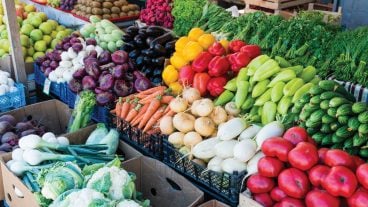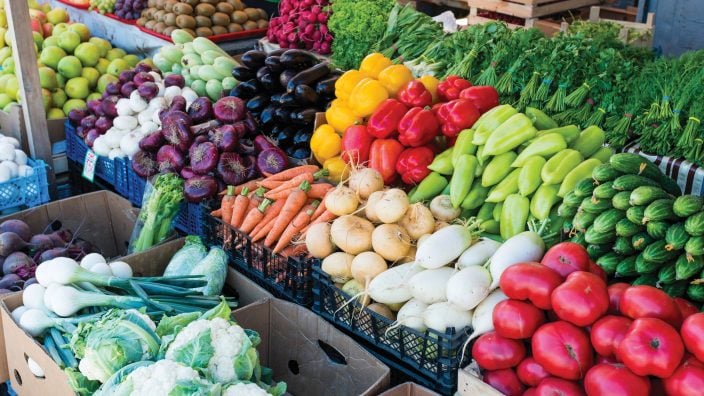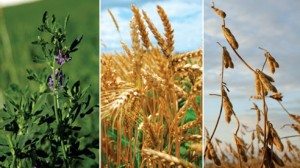Farmer’s Guide to Trucking Regulations available to Ohio Farm Bureau members
The guide includes a farm driver checklist, overview of state and federal regulations and exemptions, CDL qualifications and more.
Read More
I hope you all had a safe, healthy and relaxing Thanksgiving and that you were able to get a few items on your table from local farmers.
Despite the roller-coaster ride that has been 2020, I hope you are able to reflect on the good things that happened this year.
Personally, I am very thankful that my family, friends and colleagues are all healthy.
I am also thankful for coming up on my five-year anniversary serving as the agriculture and natural resources educator for Trumbull County. I can’t believe how fast the time has gone, and I’m looking forward to the next five years.
In my position, I get to read and hear a lot of opinions and criticisms about agriculture, both locally and nationally. Among the most frequent criticisms that I hear is, “Why not plant something other than corn and soybeans?” Or, “Farmers should plant crop XYZ.”
The reasons behind these statements range from general concerns about diversification to the interest in growing local crops for local consumers, or simply they saw a unique crop in the grocery store.
Many times, a simple explanation will resolve the comments, such as the fact that pineapples won’t grow outdoors in northeast Ohio. Other explanations are more complex and not easily communicated. If I could explain and predict agricultural markets, I would be a rich, rich person.
Generally, farmers would prefer to plant more than two crops. In addition to diversifying risk from a business standpoint, this also allows for greater crop rotation, which is better for the soil.
In the five years that I have been in this position, I have seen the downfall of miscanthus, the rise and fall of field peas and, most recently, the rise of hemp.
This interest in new crops is not new, and if you talk to anyone that farmed in the ’80s, they will tell you about the rise and fall of buckwheat and sunflowers. These are typically driven by market demands, and in the case of hemp, new legislation. Farmers are used to these cycles and they would prefer if the markets persisted, but frequently they are a passing fad.
Sometimes the reason a crop doesn’t stick around is simple. The dog food plant that was purchasing the peas changed ownership, and they chose to buy peas from the western states and Canada.
Other times it’s more complex. Miscanthus had market pressure from the paper and plastic industries as well as changing biofuel incentives. Hemp is just as complex as it had not been a legal crop in the U.S. since the 1940s and was legalized in the 2018 Farm Bill. Although there is considerable investment being made for the processing of hemp, the infrastructure to grow, sell and produce products from hemp is not there yet.
One of the biggest challenges to diversification of crops — especially more unique crops — is selling the crop once it is harvested. We have some of the most talented and intelligent farmers in Trumbull County and they can grow just about any crop (except pineapple).
I was once asked why farmers don’t grow quinoa, and the simple answer is that they couldn’t sell it. If a farmer puts in 10 acres of corn, beans or wheat, they would be able to drive less than 20 miles to sell it. That isn’t the case with quinoa, sunflowers, hemp, buckwheat or the other numerous potential crops. Without the local infrastructure to handle these crops, it is not feasible or profitable to grow these specialty crops.
Most of the processing plants for the specialty crops are located more than two or three states away (if you’re lucky) and the cost of trucking or shipping your crop to these plants is cost-prohibitive.
So if you can’t sell these unique crops, what do you grow so that you can be profitable? The answer for many of our farmers is you grow corn and soybeans, and if wheat prices are up, you put in a few acres. If the markets are there, I am certain our local farmers will be there to meet the demand.
As always, The Ohio State University Extension Trumbull County is still here to serve you during the pandemic. If you have questions about soil testing, plant disease, farm bill or generally anything about agriculture, give us a call. We are working remotely to answer your calls, but our office is open 8:30 a.m to 4:30 p.m. Monday and Thursday if you need to drop off samples, buy soil test kits or say hello.
We hope you all stay safe and healthy.
Submitted by Lee Beers, OSU Extension Educator, he can be reached by email or by phone at 330-638-6738.
OFBF Mission: Working together for Ohio farmers to advance agriculture and strengthen our communities.


The guide includes a farm driver checklist, overview of state and federal regulations and exemptions, CDL qualifications and more.
Read More


The Small-Scale Food Business Guide covers federal and state regulations for selling food products such as raw meat, dairy, eggs, baked goods, cottage foods, fruits and vegetables, honey and more.
Read More

ODA will enroll 500,000 acres into the program for a two-week sign-up period, beginning April 22, 2024, through May 6, 2024. Contact local SWCD offices to apply.
Read More

Katie Share of Columbus has been named ExploreAg and Youth Development Specialist for Ohio Farm Bureau.
Read More

Mary Klopfenstein of Delphos has been named Young Ag Professional and Ag Literacy Program Specialist for Ohio Farm Bureau.
Read More

The plan has been updated to give sole proprietors access to more rate stability and a smart solution that offers potential savings on health care.
Read More

The American Farm Bureau Federation, in partnership with Farm Credit, is seeking entrepreneurs to apply online by June 15 for the 2025 Farm Bureau Ag Innovation Challenge.
Read More

Adele Flynn of Wellington has been elected treasurer of the Ohio Farm Bureau Federation and now holds the third highest elected office in Ohio’s largest and most influential farm organization.
Read More

Producers are urged to work with their veterinarian to practice enhanced biosecurity measures and review and limit cattle movements within production systems.
Read More

The changing seasons bring with them the need to thoroughly inspect pole barns for any damages that may have occurred during the winter months.
Read More